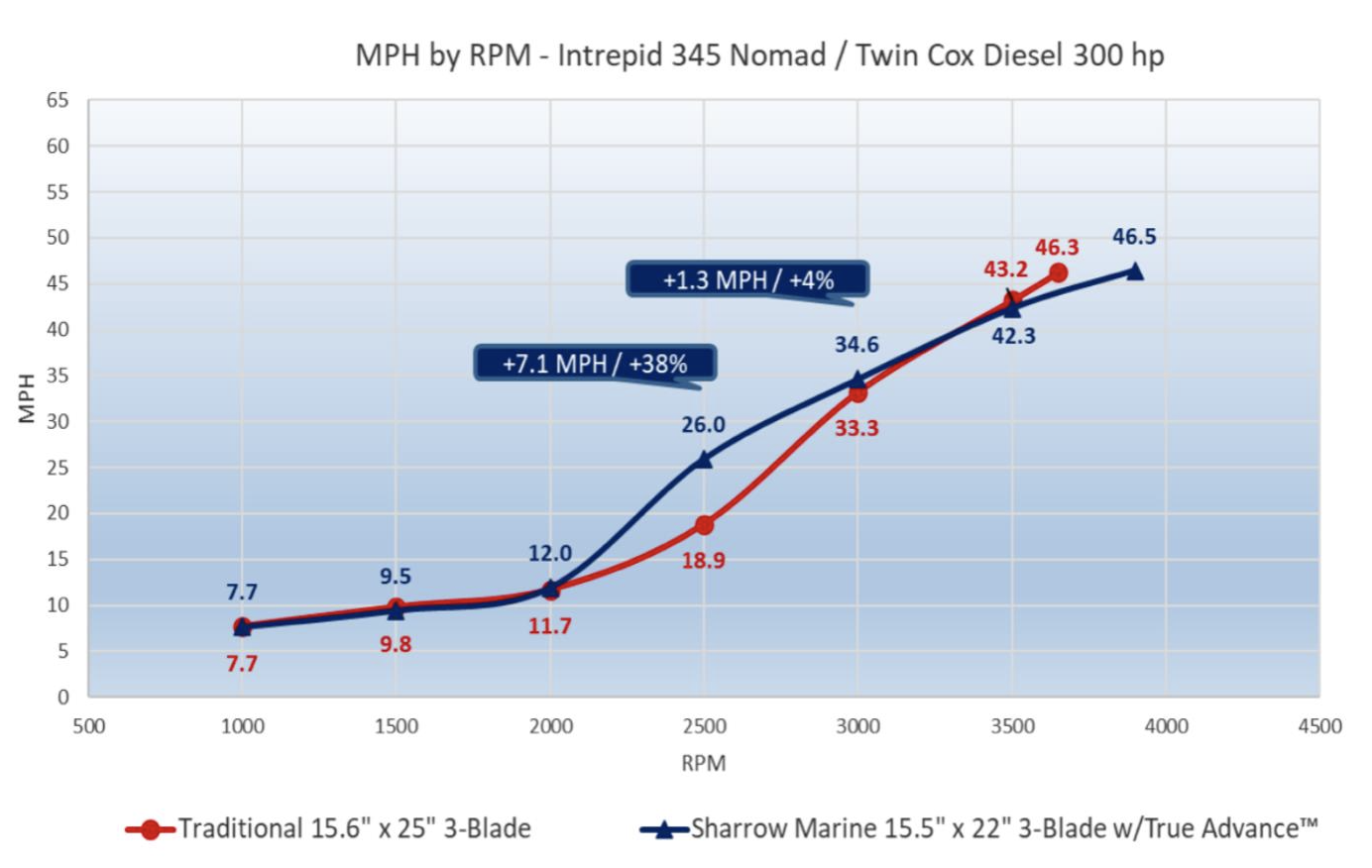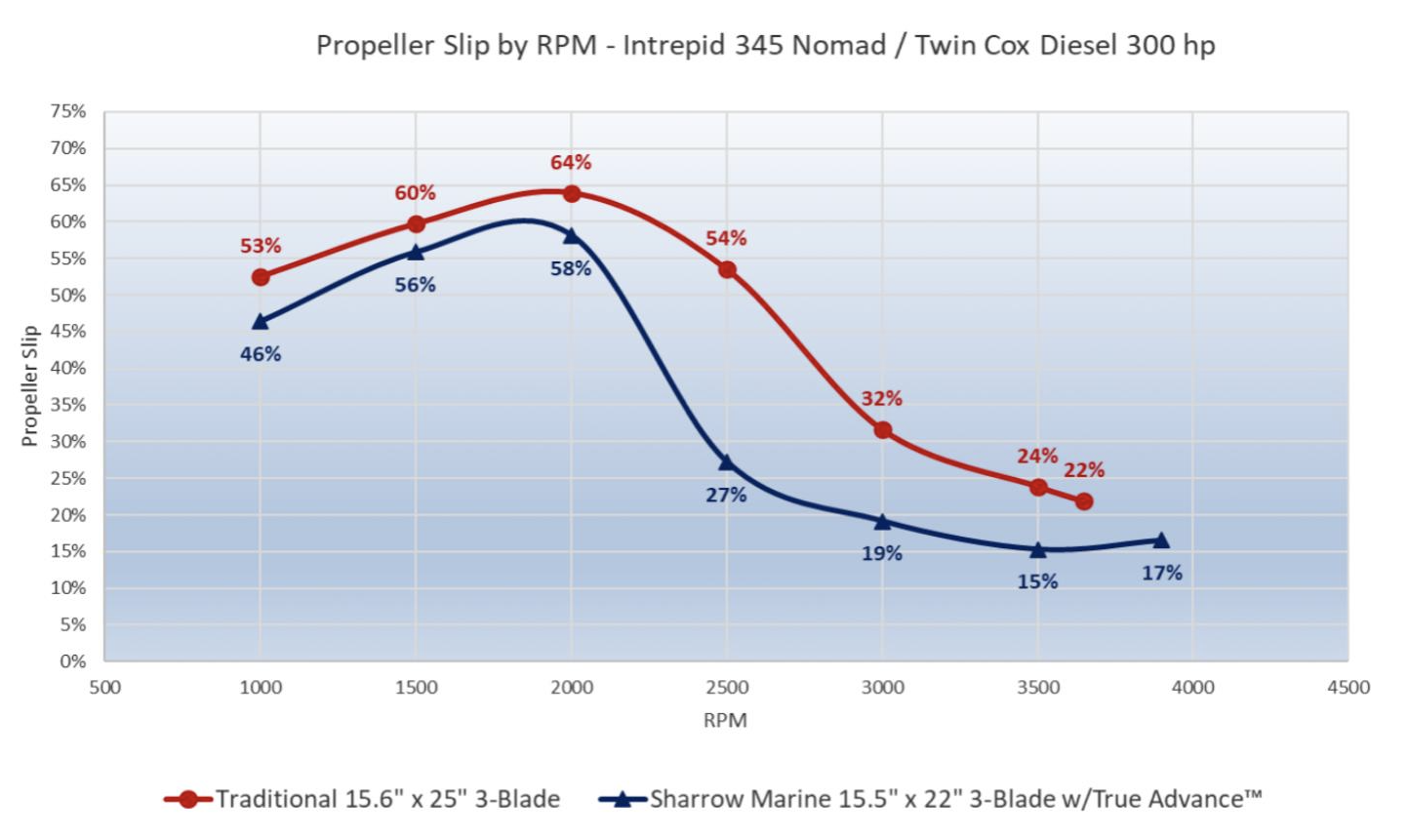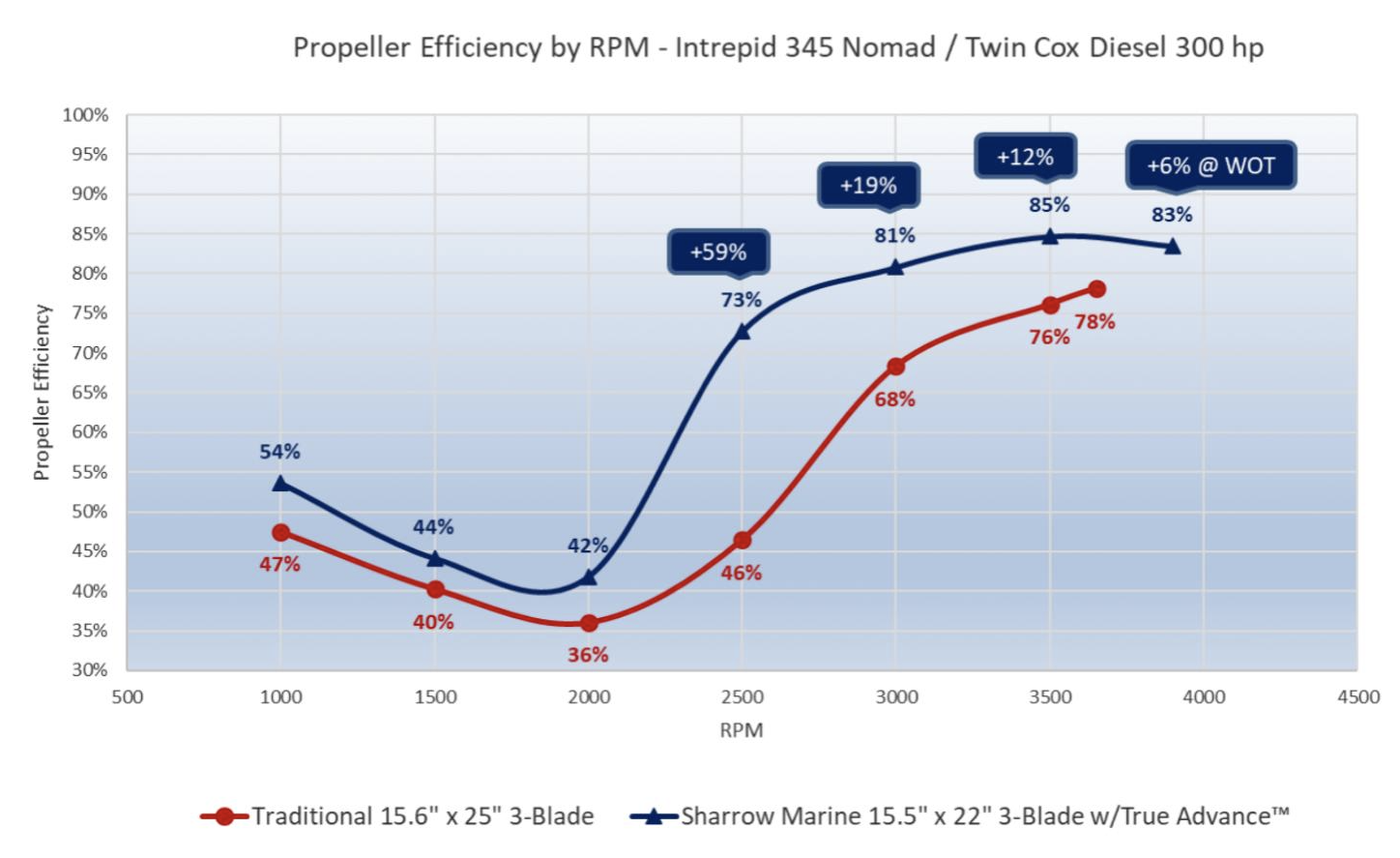Old vs. New Technology: Sharrow Shootout on 2x Cox Diesel

Most of the tests conducted comparing Sharrow props with legacy technology from all brands have been on gasolines outboards. Today, we look at tests conducted on a pair of Cox Diesel 300-hp engines. What’s your bet on the fuel-efficiency comparison in the mid-range?
This test was conducted on a 345 Nomad Intrepid center console powered by stock 300-hp Cox Diesel engines. The test crew consisted of both Sharrow and techs from Ring Power, a Florida distributor for Cox diesels. The numbers presented here were recorded by that testing team.

The 345 Intrepid Nomad is 34’6” LOA with a 10’6” beam and can carry 275 or 355 gallons of fuel, depending on the sizer of the tank chosen. The boat’s displacement depends on how the boat is outfitted, as each Intrepid can be highly customized. Intrepid is reluctant to publicize their boats’ weight, but they are no wilting lilies because they are built to take a beating offshore. Typically, this boat is powered by triple engines ranging from 300-hp to 450-hp, depending on how fast the owners want to go, and what they want their range to be.
Obviously, triple 450-hp will burn a prodigious amount of fuel at high speeds, therefore the 355-gallon fuel capacity option.

The conventional prop used in this comparison test was a well-known brand and measured 15.6” x 25” x 3. The Sharrow props were 15.5” x 22” x 3” off-the-shelf wheels that are a popular size and Sharrow is selling hundreds of them across the country.
The chart above pretty much follows a pattern that we have come to expect, with the conventional props and the Sharrows matching each other in speed at both the low end and the high RPM range. But it is in the mid range where Sharrow props excel. Assuming that the boat gets on plane at from 18 to 20 mph, the boat achieved that with the Sharrow props at about 2250 RPM, a good 250 to 300 RPM sooner than the traditional props. This is a bit better than what we normally see, with a 500 RPM difference being more of the norm.
At 2500 RPM the Intrepid was 38% faster with the Sharrow props, and nearly as much faster at 30 mph as the graph above shows. This is an important difference for boats running out to the canyons in snotty conditions that are so rough that the boat must be run in the mid to his 20s to keep from pounding the occupants to death. Any fiberglass boat built today can take a lot more punishment than the mere mortals aboard.

Very much the same story appears when we look at the miles per gallon graph. Here we can see that at 18.5 mph the Sharrow props are 26% more efficient, and at 26 mph they are 30% more efficient. At 30 mph is appears to be at least 20% more efficient.
When that 20% of improved efficiency at 30 mph is turned into miles of range it becomes a significant number. It might even mean that it will not be necessary to carry 355 gallons of fuel to feed the beast, and the smaller 275-gallon tank might do. Carrying less fuel means greater efficiency.

The Sharrow props are so efficient, quite simply, because they don’t slip as much as conventional designs. For example, in the chart above, we see that 2500 RPM, the Sharrow prop is “slipping” 27% of its 22” of pitch on each 360-degree revolution of the prop. But the conventional prop is slipping 54% of its 25” pitch.

The chart above is the converse of the “slip’ chart. Here we see that the Sharrow prop in this application is 85% efficient at advancing 22” on every revolution at 3500 PM, while the conventional prop is 76% efficient. This difference translates into higher speed at mid-range RPM and also much better fuel economy there.
Because of the tremendous torque developed by the Cox diesel outboards, conventional props have a hard time transmitting that power to the water. Because of the Sharrow prop’s patented loop design, it is actually turning 6 blades through the water – not 3 – and is therefore better able to transmit the torque to the water. That’s why throughout the entire RPM range, it’s more efficient that the old technology prop.